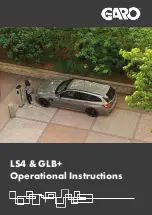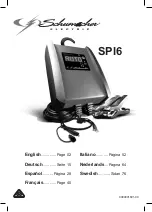
Your vehicle’s tire pressures will drop in cold ambient
temperatures. If the TPMS indicator light appears, inflate
the tires before driving. The tires will lose one PSI for
every 6° C drop in outside temperature (see
). Proper tire pressures
help protect tires from potholes and improve range
when properly inflated.
While Driving
Cold weather can increase energy consumption because
more power is required for driving, cabin and Battery
heating. Follow these suggestions to reduce energy
consumption:
• Use seat heaters to keep warm. Seat heaters use less
energy than the cabin heater. Lowering the cabin
temperature and using seat heaters reduces energy
consumption (see
).
• Slow down your driving and avoid frequent and rapid
acceleration.
Regenerative Braking
Regenerative braking can be limited if the Battery is too
cold. As you continue to drive, the Battery warms up
and regenerative power increases (see
).
NOTE:
Limited regenerative braking can be avoided if
you allow enough time to precondition your vehicle or if
you use
Schedule
to precondition Model Y before your
departure time (see
Scheduled Charging and Scheduled
).
NOTE:
Installing winter tires can result in temporarily
reduced regenerative braking power but after a short
period of driving, Model Y recalibrates to correct this.
Blue Snowflake Icon
A blue snowflake icon appears on your
touchscreen when some of the stored energy in
the Battery is unavailable because the Battery is
cold. This portion of unavailable energy displays
in blue on the Battery meter. Regenerative
braking, acceleration, and charging rates may be
limited. The snowflake icon no longer displays
when the Battery is sufficiently warm.
Warming the Battery Before
Supercharging
By using Trip Planner (see
) to
navigate to a Supercharger, Model Y pre-heats the
Battery to ensure when you arrive at the Supercharger,
the Battery temperature is optimal and ready to charge.
This reduces the amount of time it takes to charge.
NOTE:
Tesla recommends using Trip Planner to navigate
to a Supercharger for at least 30-45 minutes before
arrival to ensure optimal Battery temperature and
charging conditions. If the drive to the Supercharger is
less than 30-45 minutes, consider preconditioning the
Battery prior to driving (see
Autopilot
To ensure optimal Autopilot performance, keep the
sensors free of snow, ice, mud, and dirt (see
After Driving
Leave Model Y plugged in when not in use. This uses the
charging system, rather than the Battery itself, to keep
the Battery warm (see
High Voltage Battery Information
Scheduled Departure
When parked, plug in Model Y and use the
Schedule
settings, available on both the charging and climate
control screens, to set a time when you want to
precondition Model Y (see
Scheduled Departure on page 167
). Your vehicle
determines the appropriate time to begin charging so it
is complete during off-peak hours and the cabin and
Battery are warm by your set departure time. For more
information, see
Scheduled Charging and Scheduled
.
Charge Port
• If your charge port latch freezes in place and a
charging cable becomes stuck in the charge port, try
manually releasing the charge cable. See
Releasing Charge Cable on page 168
.
• Use the mobile app to precondition your vehicle to
help thaw ice on the charge port latch so that the
charge cable can be removed or inserted (see
).
NOTE:
You can also prevent the occurrence of a charge
port latch freezing in place by using the
Schedule
settings (see
Scheduled Charging and Scheduled
).
NOTE:
If your charge port latch is frozen in place, it may
not lock the charging cable in place when inserted, but it
can still charge at a slow AC rate even if the latch is not
engaged.
Cold Weather Best Practices
85
Driving
Содержание MODEL Y 2022
Страница 1: ...MODEL Y OWNER S MANUAL Software version 2022 16 Japan...
Страница 52: ...Steering Wheel 50 MODEL Y Owner s Manual...
Страница 54: ...Mirrors 52 MODEL Y Owner s Manual...
Страница 207: ...VICS JARTIC VICS VICS VICS VICS Disclaimers 205 Consumer Information...
Страница 261: ...Publication date 2022 5 1...
















































